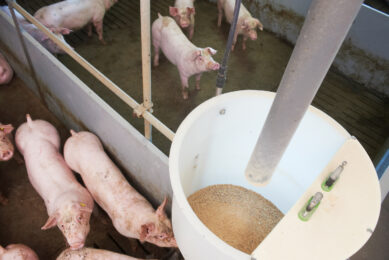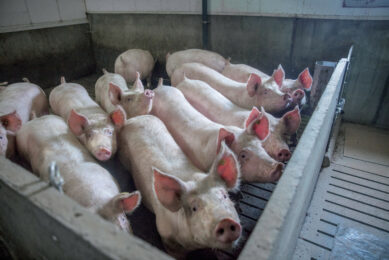Moving forward with better feeding, genetics, housing

With narrow margins in swine production, the questions of finding real improvement is ever actual. The British Pig Executive (BPEX) zoomed in on some of the latest developments in the ‘Innovations in Pig Breeding and Building Design Conference’, in June.
By Roger Abbott
Pig farmers looking to expand their production should consider feeding for quality rather than quantity, advised UK nutrition guru Dr Sandra Edwards, professor of agriculture, Newcastle University at the event. “It’s more important to focus on ensuring more piglets are born with ‘get up and go’ vigour than to increase the actual number of piglets born per litter, she said.
Although the title of her talk was ‘Feeding for fecundity’, Edwards said she believed producers should rather be feeding their sows to ensure they produced strong, vigorous piglets that were sure to survive weaning than trying to increase the number – and they should start this feeding process early to encourage embryo survival. She warned that if producers and breeding companies just concentrated on the number of piglets per litter per sow, the piglets would inevitably be smaller and there would be greater suckling competition and often higher mortality, because only the more robust piglets would survive. “Research has shown that sows fed with high fibre diets before mating have more embryos and better quality placentas leading to stronger piglets. For example, Dutch and US trials feeding sows with arginine, or a mix of arginine and glutamine resulted in higher birth weights and fewer born dead.”
She called for more research into feeding micro-nutrients to sows for better quality placentas, as well as increased production of colostrum to provide piglets with a better start in life.
Genetics
Dr Jan ten Napel, senior genetics researcher at Wageningen UR Livestock research in the Netherlands, pointed out that producers should also be recording all their production data and share it with their breeding companies and other producers to obtain the best genetic progress in pig development.
“Information is the key to both genetic and herd improvement.
The more data you collect, the better your selections are and by sharing information with other producers you can benchmark your progress and identify the bottlenecks in your system,” he said.
Thermal energy
Also speaking at the conference was thermal energy management co-ordinator Dr Barbara Sturm, who urged producers to look at other industries and see how their successes could be adapted to help the pig industry move forward.
Sturm, who works at Newcastle University’s Institute for Research on Sustainability, is an agricultural engineer with a process engineering background.
Her current main focus of research is into systematic approaches on resource efficiency, production and energy management, particularly in animal production.
She suggested that advances in computer sciences, robotics and mechanical engineering, for example, could help pig farmers remove muck more efficiently, improve ventilation, dispose of waste and develop new designs for housing, among other things.
They should also be studying the thermodynamic performance and energy production of pigs when considering the climate of barns. “The less energy the pigs need to use to maintain their body temperature, the more they can use to boost growth,” she explained.
It’s all about thinking of new materials, technologies and techniques developed by other industries in this space-age and adapting them to pig buildings. For example, cleaning robots instead of high pressure washing; there are also new energy-efficient developments in ventilation to recycle energy for heating and cooling with integrated heat and energy recovery and renewable energy systems; bulk feeding, instead of bags.
A huge amount of new design features that are now being used in modern commercial buildings could be used by producers to design and construct pig buildings to help save money and time and increase production, as well as lead to happier pigs and workers, she claimed.
“You should be looking at other industries, or at what pig producers in other countries are doing and then adapt their successful innovations to your own unit,” she concluded.
PP
Source: Pig Progress magazine 29.6 (2013)
Join 18,000+ subscribers
Subscribe to our newsletter to stay updated about all the need-to-know content in the pigsector, three times a week. Beheer
Beheer













 WP Admin
WP Admin  Bewerk bericht
Bewerk bericht